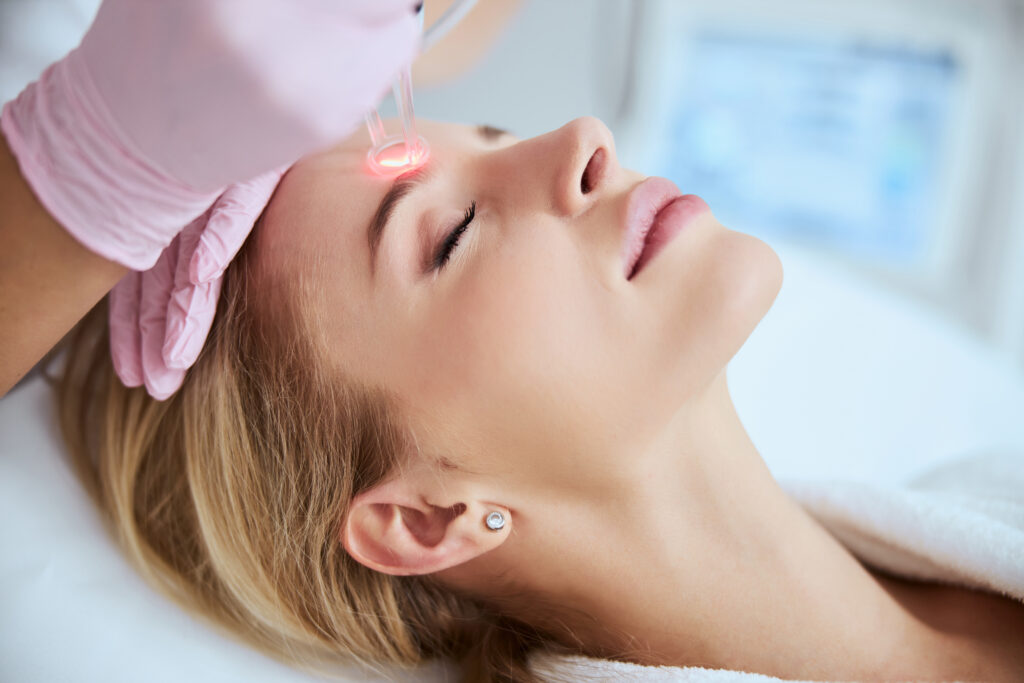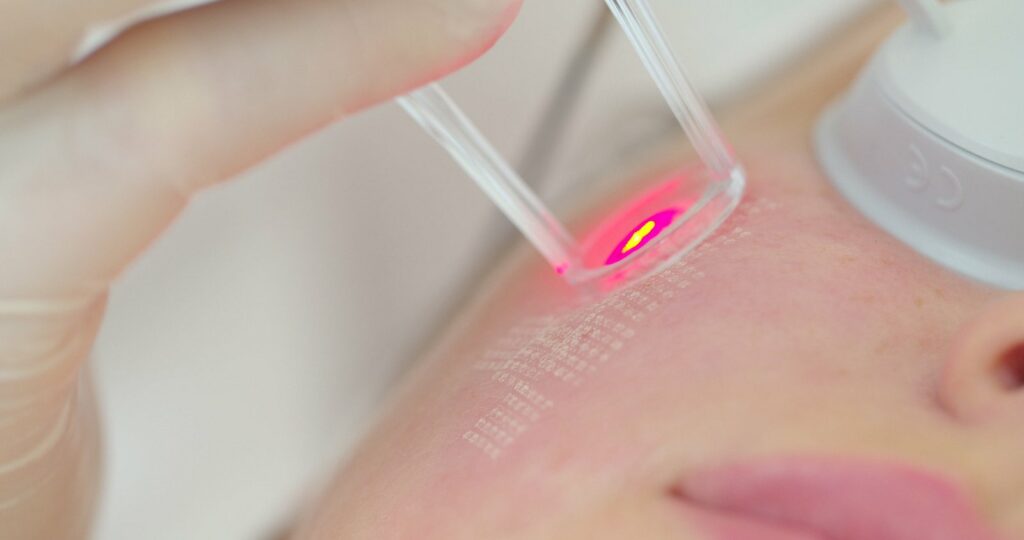Fractional Ablative CO2 Laser Resurfacing...
can erase years from your face and dramatically improve the appearance of wrinkles and discoloration. Fractional Ablative CO2 laser resurfacing targets zones deep within the dermis as opposed to the entire skin surface, creating a faster, easier healing process. A Fractional Ablative CO2 laser uses small columns of fractionated energy to ablate the tissue. Tiny wounds are made and the surrounding healthy skin assists with healing and producing new collagen and elastin. This procedure offers great improvement in wrinkles, discoloration and scarring because of the collagen stimulation. The skin will continue to improve for a period of 6 months following the procedure. Redness, swelling, and slight crusting and oozing will occur for about five to seven days. It is the optimal procedure if you are looking to get the most results with just one treatment.

What is CO2 Laser Resurfacing?
The Fractional Ablative CO2 laser resurfacing procedure has gained popularity in the field of cosmetic dermatology due to its ability to effectively rejuvenate the skin and provide significant improvement in various skin concerns. By targeting zones deep within the dermis, this procedure stimulates the production of collagen and elastin, which are essential proteins responsible for maintaining the skin’s elasticity and youthful appearance.
What is the Process?
During the treatment, a Fractional Ablative CO2 laser delivers fractionated energy in the form of small columns, creating tiny wounds in the skin. These controlled injuries trigger the body’s natural healing response, prompting the production of new collagen and elastin fibers. As a result, wrinkles, discoloration, and scarring are visibly reduced, leading to smoother, more even-toned skin.

The healing process after Fractional Ablative CO2 laser resurfacing is generally faster and easier compared to traditional ablative procedures that treat the entire skin surface. The surrounding healthy skin aids in the recovery by assisting with healing the treated areas. Over the course of approximately six months following the procedure, the skin continues to improve as collagen and elastin production increases.
Common side effects after the treatment include redness, swelling, slight crusting, and oozing, which typically subside within five to seven days. These temporary effects are a natural part of the healing process and can be managed with proper post-treatment care and the guidance of a dermatologist.
Fractional Ablative CO2 laser resurfacing is generally recommended for individuals seeking significant improvement in wrinkles, discoloration, and scarring. It is suitable for those with fair to medium skin tones. However, individuals with darker skin tones may have an increased risk of pigmentation changes and should consult with a dermatologist to determine the most suitable treatment option.
Unlike some other cosmetic procedures, Fractional Ablative CO2 laser resurfacing often achieves remarkable results with just one treatment. However, the number of treatments may vary depending on individual skin concerns, and a dermatologist can assess and recommend the optimal treatment plan during a consultation.
Before the treatment, a topical numbing cream or local anesthesia may be applied to ensure your comfort. Protective eyewear will be provided to shield your eyes from the laser. During the procedure, you may experience a warming or prickling sensation as the laser is applied to the targeted areas. The duration of the treatment depends on the size of the treated area but generally lasts between 30 minutes to an hour.
The recovery period after Fractional Ablative CO2 laser resurfacing typically lasts around five to seven days. During this time, you may experience redness, swelling, slight crusting, and oozing. It is essential to follow post-treatment instructions provided by your dermatologist, including gentle cleansing, moisturizing, and avoiding direct sun exposure.
While Fractional Ablative CO2 laser resurfacing can provide long-lasting results, the natural aging process and external factors such as sun exposure can affect the skin over time. It is recommended to maintain a good skincare routine, protect your skin from UV radiation, and consult with your dermatologist for personalized recommendations to help prolong the results. Periodic maintenance treatments may also be suggested to optimize the outcomes.




